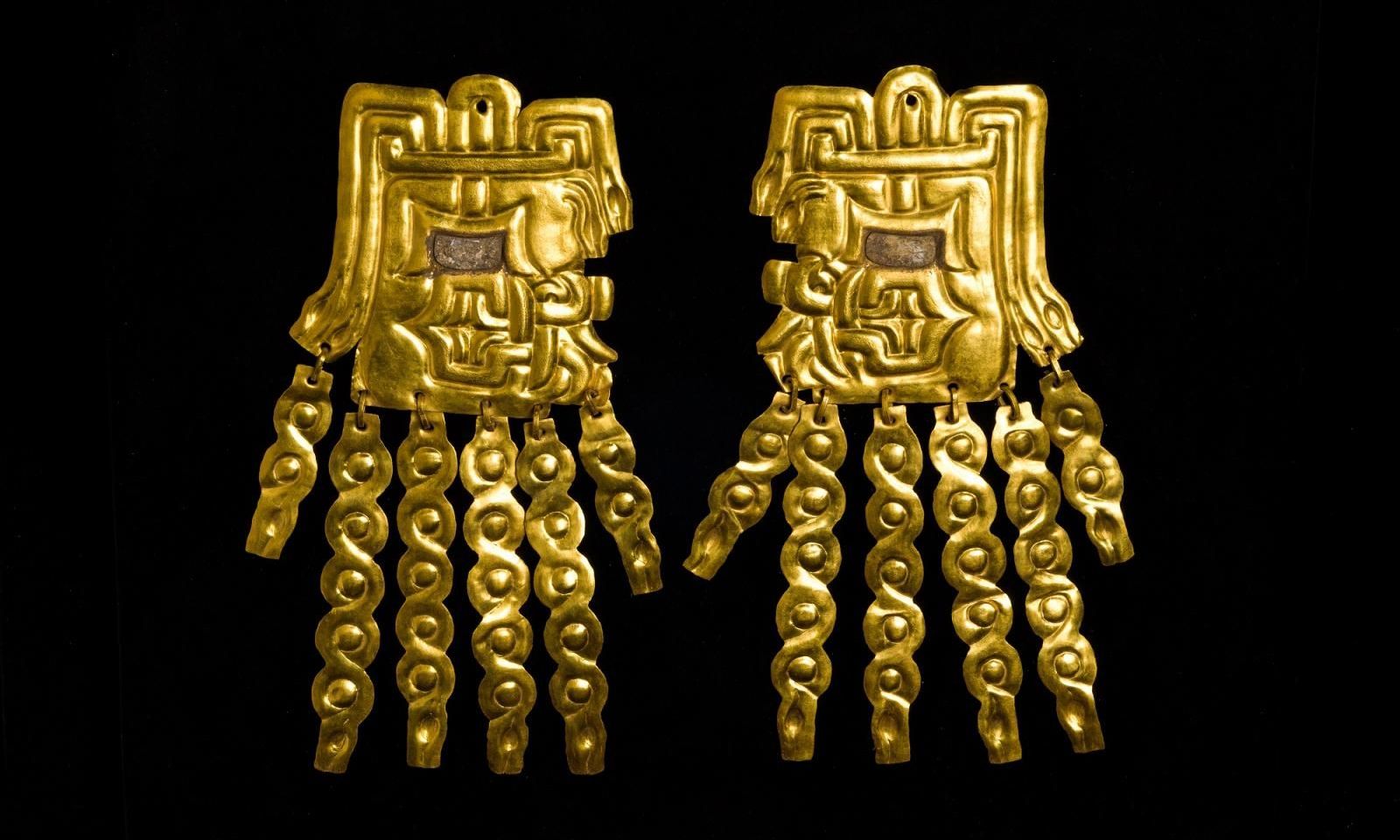Gold alloy and shell ear plates with feline features, Peru, 800 BCE to 550 BCE (Photo: Alvaro Uematsu/The British Museum)
Peru: A Journey in Time,
Until 20 February 2022, British Museum, Great Russell St, WC1B 3DG
Marking the 200th anniversary of the Peru's independence, this expansive survey begins in around 2500 BC and continues until the arrival of Europeans in the 1500s. European contempt for a civilisation far older than their own, dismissed as primitive in its use of tools, technology and written language, will be a central theme of an exhibition uniting artefacts from Bloomsbury with treasures from nine museums across Peru. Objects travelling abroad for the first time include textiles, pottery, and some of the rare gold pieces that the Spanish did not melt down and ship home. Thankfully, the exhibition will not flinch from the darkest aspect of the culture: the torrents of blood shed in animal and human sacrifice.
William Hogarth’s The March of the Guards to Finchley (1749-50) was both a satire and celebration of British liberty. © The Foundling Museum
Hogarth and Europe
Until 20 March 2022, Tate Britain, Millbank, London SW1P 4RG
The National Gallery has been displaying Hogarth among his European contemporaries and ancestors for decades; his Marriage A-la-Mode series (around 1743) was part of the gallery’s founding collection in 1824. The trouble is, as this exhibition’s curators observe, a cliché still persists in the popular psyche. Simply put, Hogarth is the victim of his own success, or at least the success of his most overtly xenophobic compositions, such as the Francophobic and anti-Catholic The Gate of Calais (1748)—created in the wake of the French-supported 1745 Jacobite Rebellion, part of the War of the Austrian Succession—which quickly defined, or consigned him to, the status of high priest of British (or English) gloating exceptionalism.
Given this and the post-Brexit times we live in, this show feels like a radical, even to some heretical, proposition. But the truth is that Hogarth was a self-consciously European as well as British artist. Indeed, he was a London artist, and as international, as well as national and local, as that great city is and always has been. Marriage A-la-Mode (as the title neatly declares) is both a parody and a homage to French art and fashions, but the real joke is on the giddy followers of such “taste”, the English aristocracy. The curators aim to make such connections and influences directly and emphatically. Let’s hope they finally hit home.
One of the more subtly lit galleries at the Barbican Art Gallery, showing Noguchi's Double Red Mountain (1969) and Time Lock (1944-45) sculptures© Tim Whitby / Getty Images
Noguchi
Until 9 January 2022, Barbican Art Gallery, Silk St, Barbican, EC2Y 8DS
This exhibition takes visitors on a journey through the life of Japanese-American artist Isamu Noguchi using his rich and varied body of work—sculpture, furniture, theatre sets, maquettes for monuments, children’s playgrounds, commercial objects—and influential working relationships with people like the sculptor Constantin Brancusi and the architect and theorist R. Buckminster Fuller. Noguchi is little-known as an artist by the wider public. “Most people think of Noguchi as the designer of the [eponymous] coffee table or the Akari light sculptures,” Ostende says. “Somehow, he’s always been lost in limbo between the Modernist canon of sculptors and the commercial designer.” Ostende hopes the exhibition “will allow people to have a larger understanding of what the definition of art or true art can be”. Equal weight is given to Noguchi’s sculptures, like his sensuous brass pieces from the late 1920s—clearly influenced by Brancusi, for whom he worked—and commercial objects such as the baby monitor Radio Nurse (1937).

